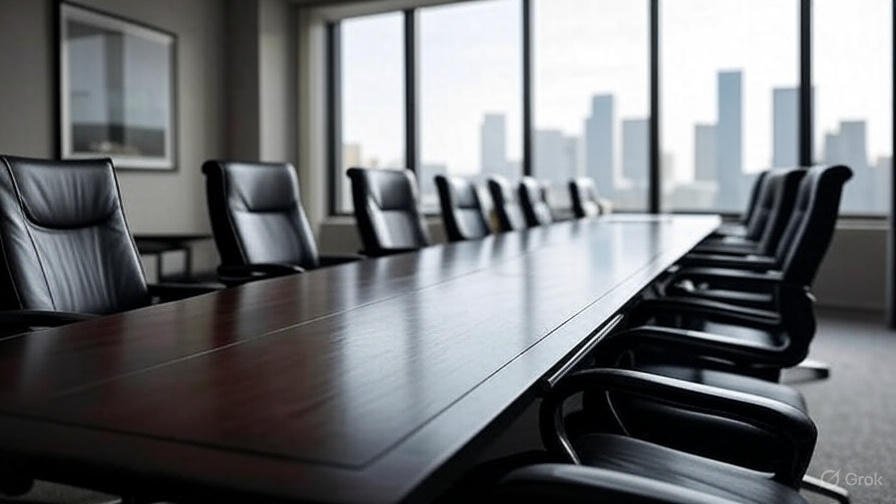In an era where hybrid work models and adaptable office environments are becoming the norm, the furniture industry is witnessing a surge in demand for versatile solutions. A recent report from the International Furniture Manufacturers Association (IFMA) highlights a 25% increase in sales of modular and foldable office furnishings over the past year. At the forefront of this trend are innovative designs in portable meeting setups, which are transforming how businesses configure their collaborative spaces.
This shift is driven by the post-pandemic need for flexibility. Companies are rethinking traditional office layouts to accommodate fluctuating team sizes, remote workers popping in for occasional meetings, and the rise of co-working spaces. According to a survey by Workspace Dynamics, 68% of organizations plan to invest in adaptable furniture by the end of 2025, citing space optimization and cost savings as primary motivators.
The Evolution of Meeting Room Essentials
Historically, conference rooms were synonymous with heavy, immovable tables and chairs that dominated fixed spaces. However, the modern workplace demands more. Enter the latest generation of foldable conference table and chair sets, which combine durability, aesthetics, and ease of use. These products are not just functional; they’re engineered to enhance productivity while minimizing storage needs.
One notable advancement comes from leading manufacturers who have incorporated lightweight materials like aluminum alloys and high-density polymers. These allow for quick setup and breakdown without sacrificing stability. For instance, a new line released by a prominent supplier features tables that fold flat in under 30 seconds, complete with integrated cable management for seamless tech integration during presentations.
Industry experts point to sustainability as another key factor. With global emphasis on eco-friendly practices, many of these sets are made from recycled materials and designed for longevity, reducing the environmental footprint of frequent replacements. “We’re seeing a blend of form and function that’s unprecedented,” says Dr. Marcus Hale, a workplace design consultant at Hale & Associates. “These innovations are enabling businesses to create dynamic environments that foster creativity and collaboration.”
Market Trends and Consumer Insights
The market for such furniture is expanding rapidly. Data from MarketResearch.com projects that the global portable office furniture sector will reach $15 billion by 2030, with foldable meeting solutions accounting for a significant portion. This growth is particularly pronounced in urban areas where real estate costs are high, prompting companies to maximize every square foot.
In the United States, tech hubs like Silicon Valley and New York City are leading the adoption. Startups and established firms alike are opting for these setups to facilitate agile workflows. A case study from a San Francisco-based software company reveals how switching to foldable systems allowed them to convert a single room into multiple configurations— from board meetings to training sessions—saving an estimated 40% on space utilization costs.
Internationally, similar patterns emerge. In Europe, where open-plan offices are prevalent, regulations around ergonomic standards are pushing manufacturers to innovate. The European Union’s recent guidelines on workplace health emphasize adjustable and movable furniture to prevent strain injuries, further boosting demand.
Consumer feedback underscores the appeal. On platforms like LinkedIn and industry forums, professionals rave about the convenience. “Our team can now set up a meeting space anywhere in the office—or even outdoors,” shares Lisa Chen, HR director at a mid-sized marketing firm. “It’s a game-changer for our hybrid setup.”
Technological Integrations and Future Prospects
Beyond basic foldability, cutting-edge models are incorporating smart features. Some include built-in wireless charging ports, Bluetooth connectivity for audio systems, and even AI-assisted height adjustments. These tech enhancements cater to the digital-native workforce, ensuring that meetings are not just efficient but also technologically seamless.
Looking ahead, experts predict further integration with IoT (Internet of Things). Imagine tables that automatically adjust based on the number of participants detected via sensors or chairs that sync with calendar apps to reserve spaces. While these concepts are still in prototype stages, prototypes showcased at the 2025 Milan Furniture Fair indicate they’re closer to reality than ever.
Challenges remain, however. Durability concerns in high-traffic environments and the initial investment cost could deter smaller businesses. Yet, as production scales and competition intensifies, prices are expected to drop. “The key is education,” notes Hale. “Once companies see the ROI through demos and trials, adoption skyrockets.”
Spotlight on Leading Providers
Several companies are at the vanguard of this movement. For those interested in exploring options, resources like Foldable Conference Table & Chair Sets offer a curated selection that balances quality and affordability. These collections emphasize user-friendly designs suitable for various settings, from corporate boardrooms to educational institutions.
Another noteworthy development is the collaboration between furniture giants and interior designers. Partnerships are yielding customizable sets that match corporate branding, with options for colors, fabrics, and modular add-ons. This personalization is crucial in an age where office aesthetics influence employee morale and client impressions.
Impact on Education and Non-Profit Sectors
The benefits extend beyond corporate walls. Educational institutions are embracing these solutions for multipurpose classrooms and event halls. With budgets often constrained, foldable sets provide a cost-effective way to accommodate varying group sizes, from seminars to large lectures.
Non-profits and community centers also stand to gain. Organizations like community outreach programs report using portable furniture for pop-up events, workshops, and fundraisers. “It’s empowered us to reach more people without the hassle of permanent setups,” says Jamal Ortiz, director of a local youth center in Chicago.
In developing regions, where infrastructure might be limited, these innovations are proving invaluable. Aid organizations are deploying foldable units in temporary field offices, disaster relief centers, and mobile clinics, demonstrating the versatility across diverse applications.
Environmental and Economic Considerations
Sustainability isn’t just a buzzword here. Many manufacturers are committing to carbon-neutral production processes. For example, using bamboo composites and low-VOC finishes reduces harmful emissions. Economically, the shift supports job creation in design and manufacturing sectors, particularly in regions investing in green tech.
A report from the World Economic Forum underscores how such furniture contributes to circular economies. By designing for disassembly and recycling, the lifecycle of these products extends, minimizing waste. Businesses adopting them often qualify for green certifications, enhancing their corporate social responsibility profiles.
Expert Opinions and Case Studies
To delve deeper, we spoke with Sarah Kline, a furniture analyst at Global Insights. “The pandemic accelerated what was already a brewing trend,” she explains. “Now, with return-to-office mandates varying, flexibility is non-negotiable. Foldable systems are the bridge between fixed and fluid workspaces.”
A compelling case study comes from a Fortune 500 company that revamped its headquarters. By integrating portable meeting furniture, they reduced their real estate footprint by 20%, reallocating savings to employee wellness programs. Employee satisfaction surveys post-implementation showed a 15% uptick in perceived work environment quality.
Similarly, in the hospitality sector, hotels are using these sets for conference facilities. The ability to quickly reconfigure ballrooms for weddings, seminars, or banquets maximizes revenue streams. “It’s about agility in a competitive market,” says hotel manager Raj Patel.
Conclusion: A Foldable Future
As we navigate the evolving landscape of work, innovations in portable meeting furniture like Foldable Conference Table & Chair Sets are poised to play a pivotal role. They embody the principles of adaptability, sustainability, and efficiency that define modern success.
Whether for a startup scaling up or an established enterprise optimizing operations, these solutions offer a pathway to more dynamic, inclusive environments. As technology continues to evolve, expect even more groundbreaking developments that will further blur the lines between traditional and transformative workspaces.




